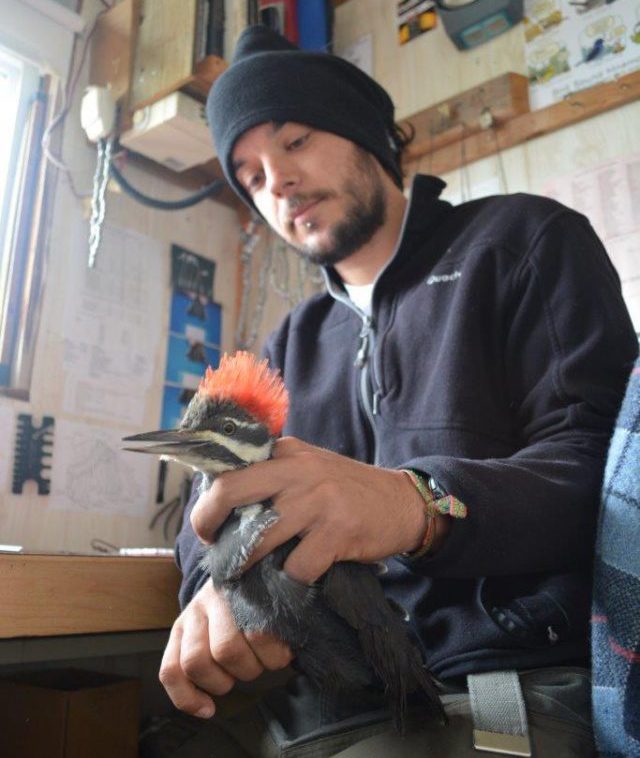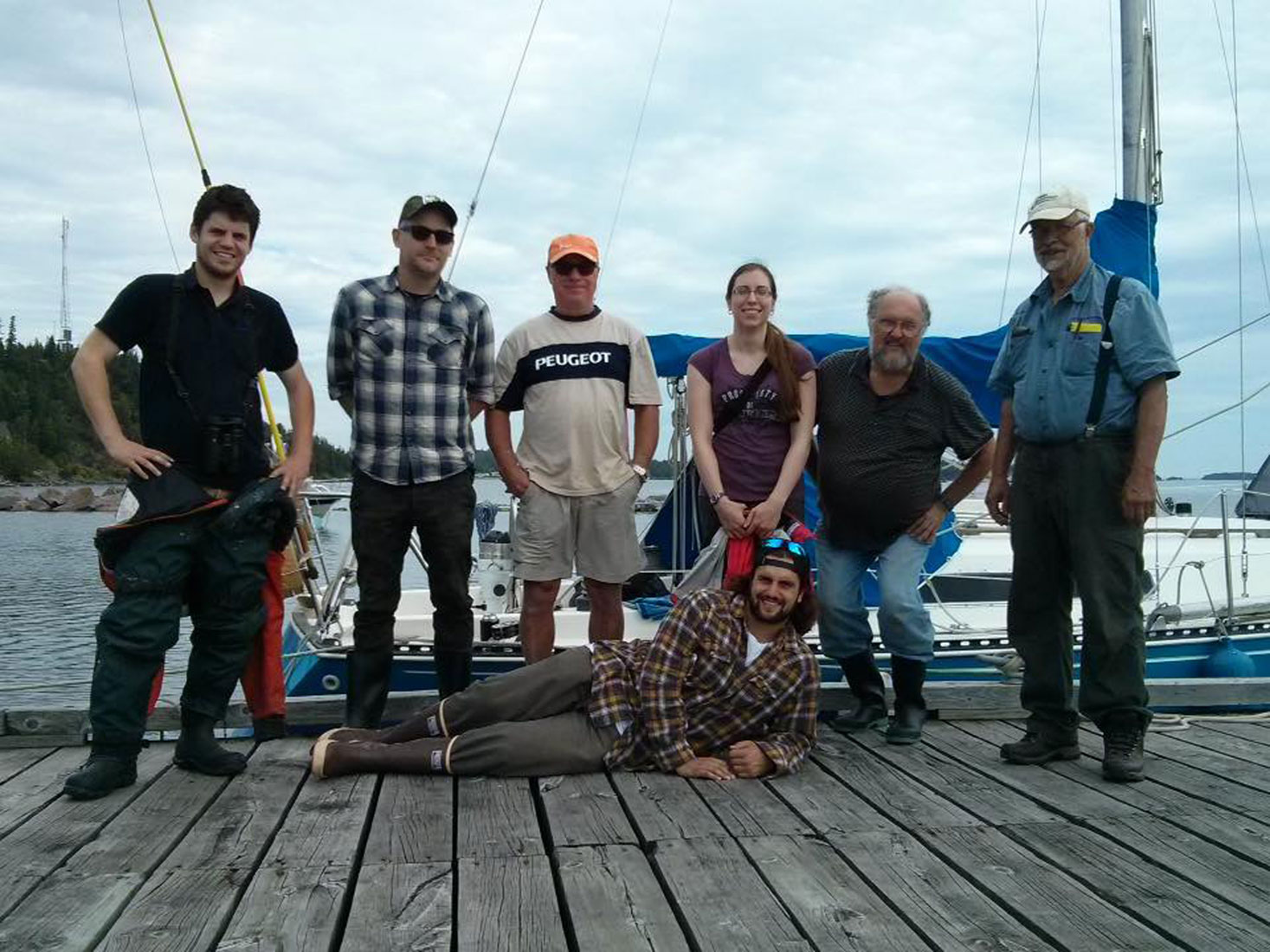Monitoring Activities
The Observatory is run by Program Coordinator (Chief Bander), which was held in 2014 by Rinchen Boardman. He is assisted by a crew of long and short-term volunteers. When possible, assistants have also been hired through federal and provincial student employment programs.
The Observatory is opened up in late April and typically runs until the end of October, with most volunteers active during the peak bird migration in spring and fall. The main monitoring activities consist of banding and visual monitoring during migration. Other programs such as Monitoring Avian Productivity and Survivorship (MAPS) are also run during the main breeding season in most years.
Mist nests are set in the clearing adjacent to the banding station and in the surrounding forest. A heligoland trap is also used to catch passerines for banding. Mist nets are opened up every day to catch birds that will be identified, aged, sexed and weighed before receiving a leg band with an identifying number on it. During the fall, mist-netting is conducted during the night to catch Northern Saw-whet and Boreal Owls.
Visual migration monitoring is conducted by other staff who keep track of birds swimming or flying by the Cape. A wooden tower was build to allow an unrestricted view towards the Giant above the treetops. Large amounts of data are thus collected and later analyzed to help assess bird population and migration trends.
Gallery





Spotting Tower for Visual Migration Monitoring (John Woodcock photo)

